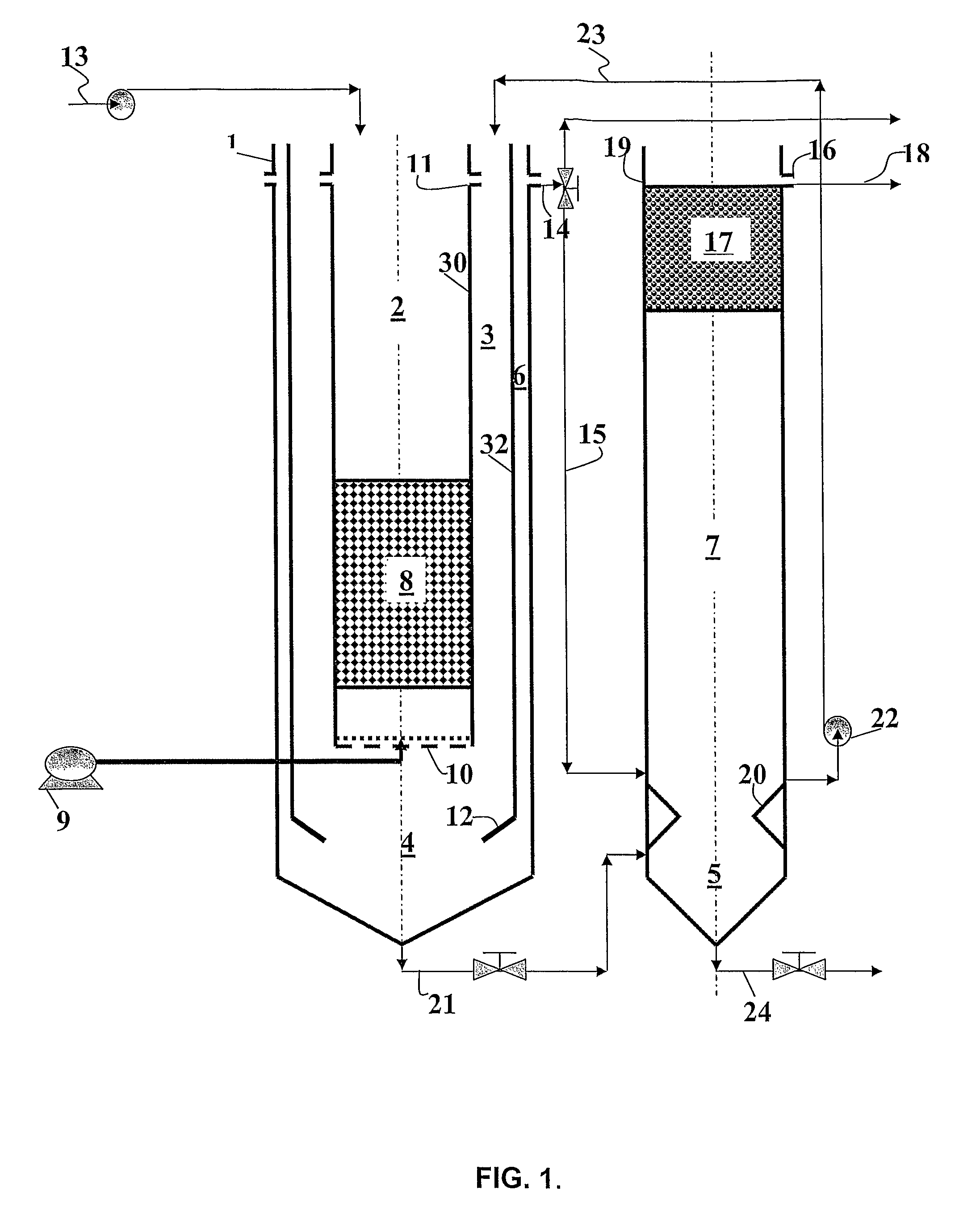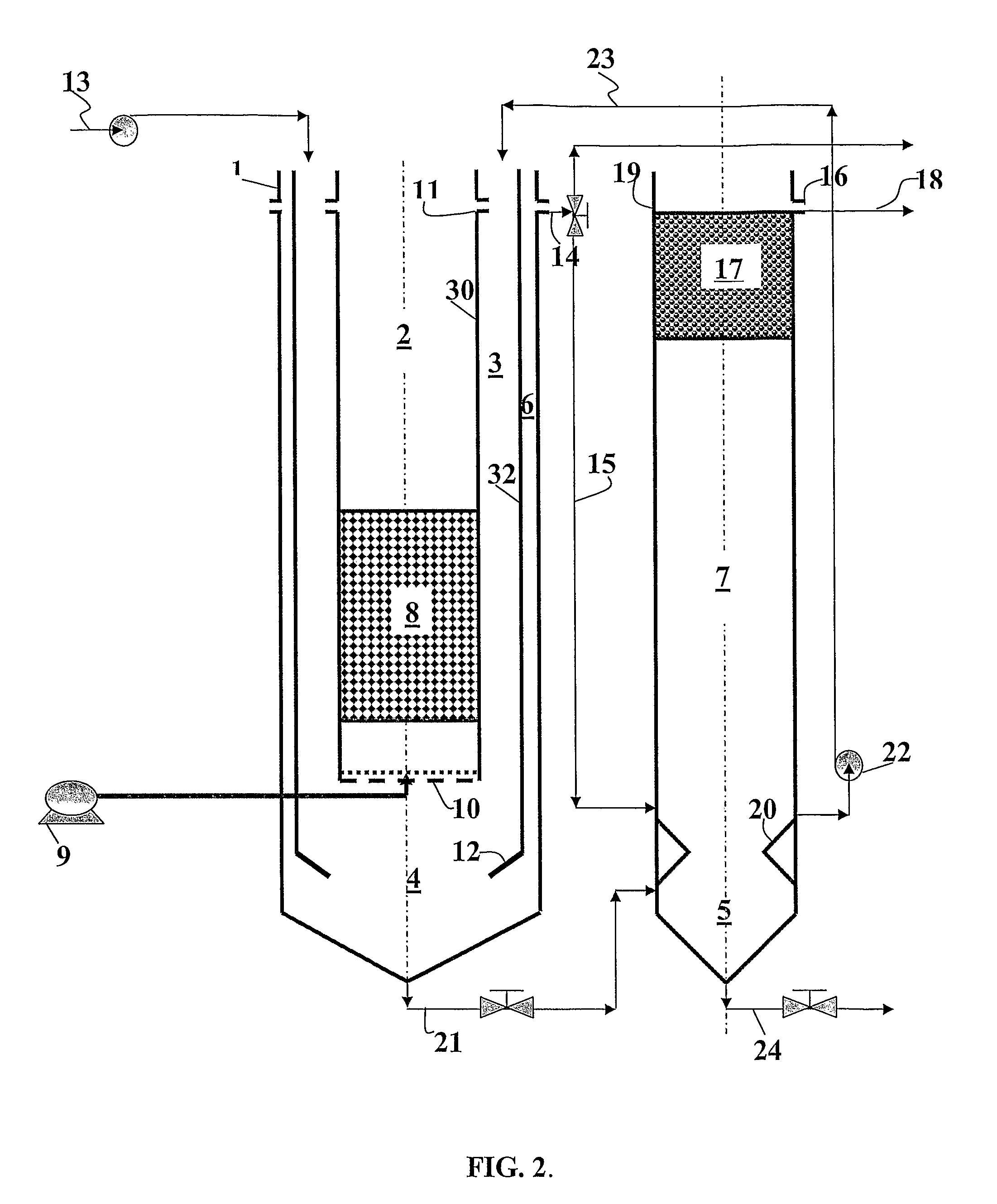Integrated multi-zone wastewater treatment system and method
a wastewater treatment system and multi-zone technology, applied in biological water/sewage treatment, sustainable biological treatment, membrane technology, etc., can solve problems such as threatening aquatic life, suspended growth biological treatment system, and difficulty in maintaining an adequate concentration of active biomass, and achieve the effect of efficient removal
- Summary
- Abstract
- Description
- Claims
- Application Information
AI Technical Summary
Benefits of technology
Problems solved by technology
Method used
Image
Examples
Embodiment Construction
[0053]As stated above, the treatment system of the present invention uses two separate but interlinked tanks for the biological treatment and solid-liquid separation processes. The first tank contains an aerobic zone, microaerophilic and anoxic zone plus a clarification zone. The second tank contains an anaerobic zone, a solid-liquid separation zone and a filtration unit. An example of the treatment system according to the invention is presented in FIG. 1.
[0054]It will be noted that in the embodiments described herein, the anaerobic zone is disposed in a different vessel than the aerobic zone and the oxygen-depleted zone(s).
[0055]The wastewater is introduced into the first tank 1 containing an aerobic zone 2, microaerophilic zone 3 and anoxic zone 4. The separation of solids from liquid takes place in two clarification zones 6 and 7, the first zone 6 attached to the microaerophilic zone 3, and the second zone 7 located in the second tank 19 disposed downstream of the first tank 1 an...
PUM
| Property | Measurement | Unit |
|---|---|---|
| concentration | aaaaa | aaaaa |
| concentration | aaaaa | aaaaa |
| angle | aaaaa | aaaaa |
Abstract
Description
Claims
Application Information
 Login to View More
Login to View More - R&D
- Intellectual Property
- Life Sciences
- Materials
- Tech Scout
- Unparalleled Data Quality
- Higher Quality Content
- 60% Fewer Hallucinations
Browse by: Latest US Patents, China's latest patents, Technical Efficacy Thesaurus, Application Domain, Technology Topic, Popular Technical Reports.
© 2025 PatSnap. All rights reserved.Legal|Privacy policy|Modern Slavery Act Transparency Statement|Sitemap|About US| Contact US: help@patsnap.com



